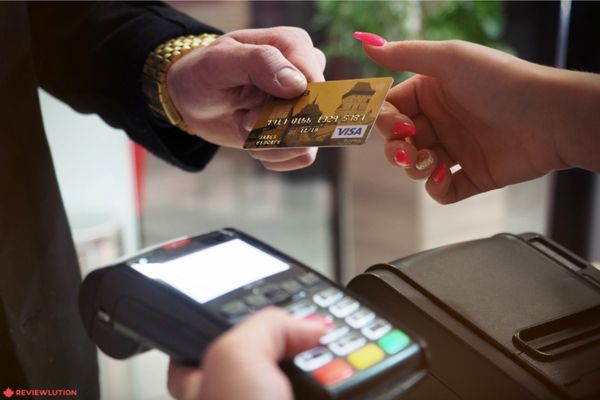What is a Purchase Interest Charge? All You Need to Know
There were 76.2 million credit cards in circulation in 2021, making them one of the leading payment methods used in the country. It’s easy to see why, since credit cards offer a number of benefits due to their convenience.
But there’s the other side of the coin as well – you’re faced with a number of challenges, including the infamous purchase interest charge. Here’s a brief overview of what that is.
Purchase Interest Charges 101
In a nutshell, this interest rate that’s assigned to each purchase that you make with your credit card. If you don’t pay off your statement balance at the end of the billing cycle, a purchase rate is applied to the amount that you owe. Afterwards, that sum is added to the total balance that you’re expected to pay back.
Oftentimes, the credit card purchase interest is referred to as the annual percentage rate (APR). Some credit cards start off with a 0% introductory APR, which may be anywhere from a few weeks or even months. But once that grace period comes to a close, you’ll be charged in full for each transaction.
When Is Credit Card Interest Charged?
It’s important to note that the purchase interest rate is only applicable to unpaid balances that belong to clients that haven’t paid off their total by the end of the billing cycle. The more you put off paying your debt, the higher the purchase rate gets so it’s best if you take care of those expenses as soon as possible.
To determine your rates, companies use a well-defined credit card interest calculator. On the whole, your APR is divided by 365, which is the total number of days in a year. At the end of each day, your current balance is multiplied by the daily rate, which results in your daily interest rate. You get the full charge at the end of the month.
Bottom line is, as long as you manage to pay off your total balance by its due date, it won’t be transferred into next month’s bill and you won’t be charged any interest.
Types of Purchase Rates
How does interest work? Well, there are two basic types of purchase rates offered by credit card companies. Let’s do a deep dive into each one so that you know what to expect.
Introductory Rates
In many cases, the initial purchase rate for a card may start at 0%, which is commonly known as the credit card grace period. This interest-free period is usually valid for about 12 to 15 months, though it’s not uncommon for some companies to be more generous with their offers.
When the introductory period ends, the purchase rate is then subjected to standard fees based on the lender’s policy. This determines the amount that you’ll be charged with at the end of each payment cycle.
Variable Rates
Variable rates are based on the commercial prime rate along with margin trade executions. The percentage changes over time, in accordance with the official federal funds rate. In other words, lenders can increase or decrease variable rates at their discretion if there’s notable fluctuation in the general credit market score.
This gives credit card companies the freedom of charging interest in accordance with the overall market fluctuation. Such conditions are thoroughly explained in their terms and conditions, which is why it’s absolutely crucial to read them carefully.
Purchase Rates vs. Other Credit Card Rates
Apart from the classic purchase rate, your credit card is subject to a number of other charges as well. Credit card companies are normally quite transparent in this regard, listing all the potential expenses in the relevant terms and conditions section.
Balance Transfer Rate
Whenever you transfer a balance from one account to another, the latter card is charged with an additional rate for the transaction itself. It may be the same amount as your purchase rate or even higher, depending on the bank’s policy. As is the case with pretty much all card rates, you’ll receive these charges at the end of each month.
Cash Advance Rate
Cash advances occur every time you withdraw money from an ATM or bank teller against your cash advance line of credit. This rate is charged immediately, with no promotional or grace periods in between. Plus, it’s anywhere from 15% to 30% higher than your credit card purchase interest.
How can you Avoid Purchase Interest Charges?
Wouldn’t we all want to know? If there’s a way that we can get out of paying extra for literally anything, we would take it. Luckily, for credit cards in particular, there are a few ways that you can avoid breaking your bank.
Pay Off Your Balance in Each Billing Cycle
This may sound obvious, but try to pay your total balance back by end of the billing cycle, so that you don’t get charged with interest on your purchases. Don’t wait until the due date either, because system lags can happen and your payment might not be processed in time before the cycle closes.
Additionally, paying your bills as soon as you get them is a great way of reducing your average daily balance throughout the entire month. This can have a positive impact on the overall rates you’re charged with.
Open a 0% Interest Credit Card
Despite being a temporary solution to an ongoing problem, what’s stopping you from taking advantage of the 0% promotional APR periods for new cardholders? In this way, you can skim past interest rates, even if it is only for a little while.
Consider a Balance Transfer
In a similar fashion, you can relocate your funds to a balance transfer card that offers a 0% introductory APR rate. By doing this, you’ll get enough time to pay off your balance with no additional charges.
However, you’ll need a back-up plan on how you’ll manage your funds once the grace period ends. Think about it this way, you’ll have just enough time to save up some money before you’re being forced to spend it regardless. You can’t have everything, right?
Use a Personal Loan
Taking out a low-rate personal loan can actually help you qualify for a low APR. This will, in turn, reduce your monthly payments and help your budget. Be careful though, because you’re taking out money from one source just to avoid paying another – it’s a double-edged sword that should be handled with caution.
Check out some of the best personal loan providers in Canada!
Wrapping Up
All things considered, managing your credit card balance can be very tricky. Banks seemingly charge for any and all activity coming from your account, so it’s difficult to stay on top of the game.
But, and there’s a but, if you pick a card with a low APR and pay back what you owe within the appointed deadline, you’ll be able to avoid extra charges and credit card debt.
FAQ
The easiest way to do this is by dividing your current APR by 365, or the number of days in a year. The end result should yield the exact purchase interest charge that your bank is billing you with.
Yes. Even though interest is calculated on a daily basis, you’ll receive an official finance charge on your balance by the end of the month.
Simply put, it’s interest you’re expected to pay on your credit card balance every time a purchase is made. This only applies to payments you haven’t deposited in full before the end of the billing cycle.












